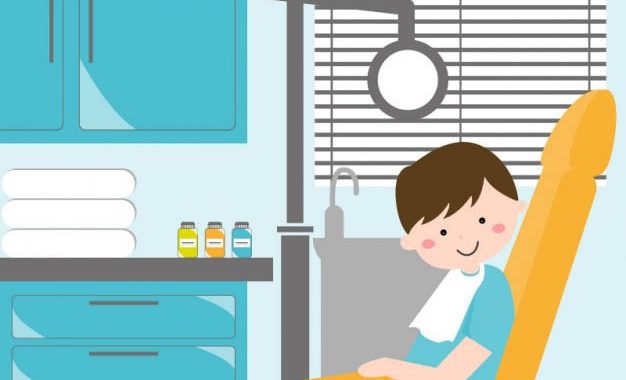Pediatric Dentist Near Me – Pediatric is defined as a branch of medicine dealing with the development, care, and diseases of infants, children, and adolescents. One of the most overlooked dental care services or profession is pediatric dentist.

Pediatric Dentist Near Me – The Reason
A number of people are waiting for emergencies before taking care of any dental diseases.
But why is that so? Why should we care for kids, infants, and almost all ages? Read below some of the most common dental problems and why we must care to find a dentist as soon as possible.
5 Proven Tips to Keep Cavities at bay
Our teeth is an integral part of our lives whether it’s in childhood or in adulthood. Its functions not only apply to aesthetics but more importantly, it aids in the consumption and the cycle of breaking down food.
More often than not, this regular pattern of wear and tear partnered with numerous chemical reactions that occur inside our mouths lead to oral problems if given the cold shoulder. One of the most common oral problems in the world today – suffered by children and adults alike – are cavities.
In our lifetime, our teeth will only change once – from baby teeth (or milk teeth) to permanent teeth (or adult teeth). Despite this obvious convenience of having your teeth naturally replaced as you transition to adulthood we should still keep in mind that our teeth should always come as a top priority.
So, how do we really fight-off these micro-avengers hiding in plain sight planning their next attack?
Here we give you proven tips to guard your chompers against their decaying might.
What are Cavities?
Cavities, in a sense, are micro-holes or dents that form on the teeth when acid produced by specific types of bacteria react or decay the surface of your teeth – the enamel. These holes, when left unchecked, bore down into the underlying layer of the tooth -the dentin- causing toothache and worse – infections.
Did you know?
According to a recent study conducted by the Centers for Disease Control and Prevention cavities or tooth decay is among the leading and recurring oral ailments in children.
The National Institute of Dental and Craniofacial Research seconded these findings stating that 42 percent of children from the ages of two to 11 were afflicted with cavities on their baby teeth and 21 percent of children from the ages of six to 11 have experienced decay in their permanent teeth.
A similar study spearheaded by the National Center for Health Statistics veered towards adults aged 20-64 noted that 91 percent of the adults in the pool study had caries while 27 percent had untreated tooth decay.
“In 2011-2012, nearly all U.S. adults aged 65 and over (96 percent) with any permanent teeth had dental caries,” the authors further revealed.
Teach Your Kids Proper Oral Hygiene
What better way to halt the spread of cavities than a good-old-fashioned learning? Bring out those dusty chalkboards and notebooks and write this one down quicker than you can say, CHEESE!
The simplest and most cost-cutting way of protecting your teeth and your child’s teeth from cavities is to effectively practice proper oral hygiene regimens inside your home.
From brushing, flossing, to swishing every step makes a difference and every step keeps you away from tooth decay.
By religiously following the ABC’s (Brushing, Flossing, and Swishing) of good oral hygiene you’re building multiple solid and bacteria-proof barriers that will help your teeth repel the onslaught of cavities.
So, get brushing and flossing and swish your cavities away!
Limit Consumption of Sweets
While sweets do not necessarily equate to cavities, it sure does contribute tremendously to the formation of tooth decay if left unchecked.
You see, your mouth is a hive of microcellular life – it must have not occurred to you that your body isn’t just yours- it’s home to all sorts of other things.
When you consume sugar, the bacteria in your mouth goes into berserk mode and produces vast amounts of acid that chip away and break down the surface of your teeth, slowly devouring the enamel down to the core.
When the acid reaches the root of your teeth, bacteria seep into the crevices and holes which in turn irritate the nerves and causes toothaches.
That’s why you should always keep in mind that too much of anything is BAD!
Avoid Fruit and Vegetable Juice Drinks
Yes, it’s given that anything that comes from green yield is good for your overall well-being but the same thing cannot be said about your teeth.
Recent trends paved the way for what we call “Juicing” – juicing is a process wherein vegetables and fruits are broken down or liquefied for the convenience of those who refuse to chew on nature’s green bounty.
Juicing is especially popular to those who are keeping up with modern time’s contemporary bodily standards. And though it has its benefits – mainly lower calorie intake and vitamin absorption – your teeth doesn’t sit well with all that juice.
According to recent breakthroughs in dental health, juicing not only accounts for an increased susceptibility to tooth decay it also is one of the top factors in teeth staining. This is because when vegetables and fruits are transformed into liquid form acidic substances wherein the teeth gets exposed discolor the teeth.
“Every time you eat and drink something acidic, the enamel softens and the surface demineralises,” Dr. David Tharme Jones of The London Smile Clinic shared.
Expose your kids to early Dental Check-ups
It is a known fact that dental clinics and children don’t mix well together. This is confirmed in a study that discovered, 9% to 15% of American children refuse dental treatment because of dental anxiety.
Similar researches supervised by the British Dental Health Foundation also found that 36% of patients, children and adult alike, stated that fear keeps them from visiting dentists on a regular basis.
Although it can be a little difficult, exposing your children to early dental check ups could prove to be of a convenience in the long run especially in identifying the early signs of tooth and gum problems.
By taking the extra step to familiarize them in dental environments and introducing them to practitioners that are well-versed in this specific situations you can help them gain a deeper understanding for overall dental health.
Sealants: An extra layer of Protection
Most people can go by just brushing and flossing their teeth but in the case of children, two simple steps seem inadequate. We all know that children are more prone to eating sweets and consumables that are high in sugar. And for the longest time, sugar has been attributed to be one of the leading causes of tooth decay and other oral problems.
This is where sealants come in – sealants are thin, protective shells that are placed at the surface of the back of your teeth. These “shells” can either be made out of plastic or other dental materials.
Sealants work by preventing pieces of food and bacteria from settling into your teeth. It acts as an initial barrier, protecting the teeth from developing decay.
In fact, it has been found that sealants reduce the risk of decay by nearly 80% in molars. Another more recent study by the Centers for Disease Control showed that “school-age children without sealants have almost three times more cavities than children with sealants.”
Keeping your teeth healthy should always be top priority regardless of age. Our teeth serve multiple functions in our everyday live from eating to communicating and a whole lot more.
So, if you want to preserve that bright smile of yours just follow these steps and smile your cavities away!
TIPS & WARNINGS:
- Always remember this old adage: “Suffer the pain of discipline or suffer the pain of regret”
- Dental Insurance should never be an option in the long run it will help us financially
- Prevention is better than cure so always make hygiene a HABIT!
- Pediatric Dentist Near Me is synonymous to kids dentist. So see to it that the dental clinic or the dentist is really capable to handle kids.
